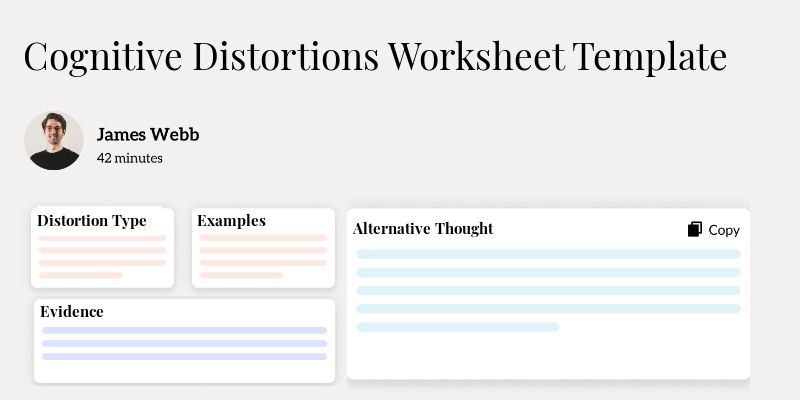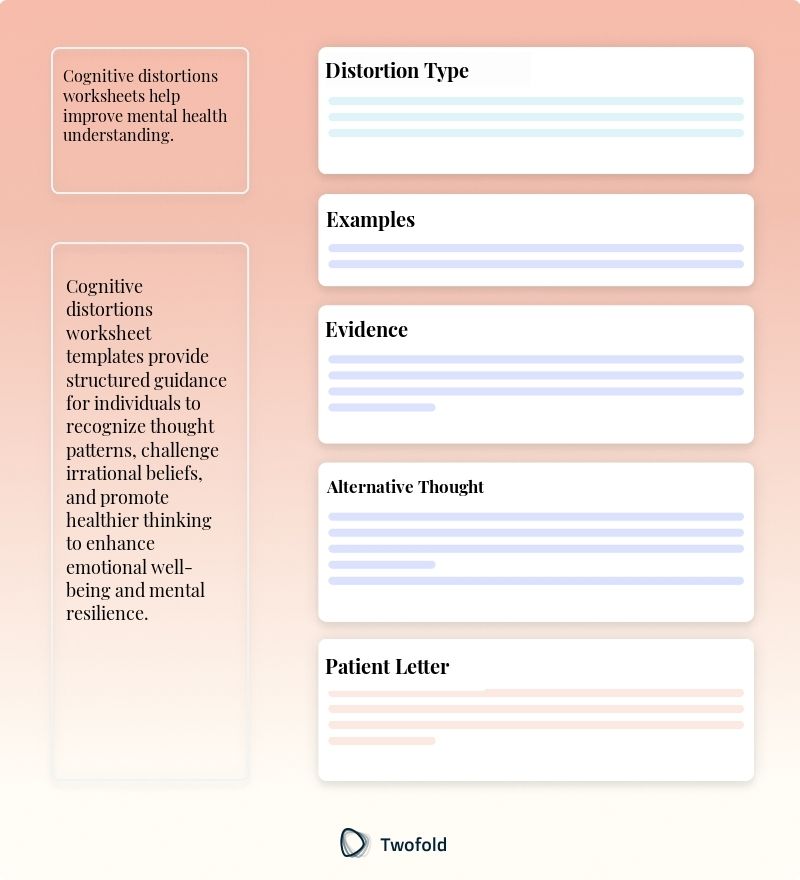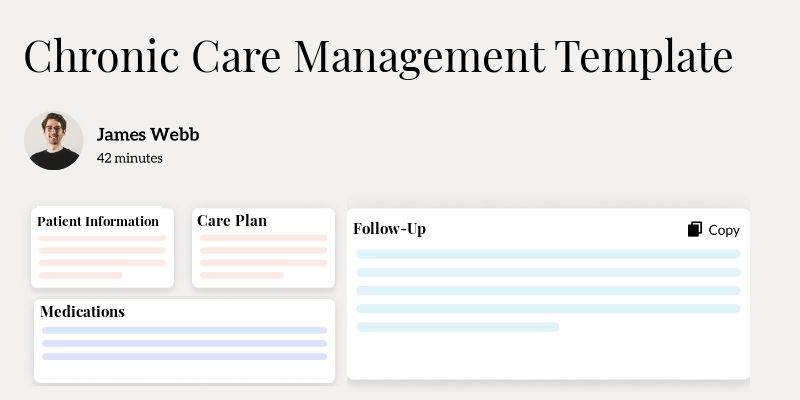
Cognitive Distortions Worksheet Template
Picture this: You're faced with a truckload of unhelpful thoughts running wild in your head. It can feel like trying to tame an unruly circus. The Cognitive Distortions Worksheet Template comes in as a trusty tool for smoothing out these mental tangles. This article will introduce you to expert insights and practical applications to transform how you work with psychological assessments.
What Is a Cognitive Distortions Worksheet Template?
A Cognitive Distortions Worksheet Template is a structured tool designed to help individuals recognize and challenge faulty thought patterns, often called cognitive distortions. These distortions can negatively influence emotions and behaviors.
The template serves as a guide to plot these thought patterns, making it easier for clients to understand the connection between their thoughts, feelings, and actions, and to work towards healthier mental habits.
Key Components of a Cognitive Distortions Worksheet Template
This template assists individuals in tracking and correcting cognitive distortions. Key components include:
- Identification of Distortion: Helps in naming the specific distortion, such as all-or-nothing thinking.
- Situation Description: A section to describe the context or trigger for the distortion.
- Emotional Feedback: Spaces to record emotions related to the distortions.
- Rational Response: Encourages the creation of a healthier, realistic counter-response.

How to Use a Cognitive Distortions Worksheet Template: Step-by-Step Process
Step 1: Identify the Thought
Start by writing down the thought or situation that's troubling you.
Step 2: Name the Distortion
Determine what type of cognitive distortion it is, using common categories like overgeneralization or catastrophizing.
Step 3: Record Your Emotions
Write the emotions felt when experiencing this thought, noting the intensity of these feelings
Step 4: Create a Rational Response
Develop a logical counter‑argument to the distorted thought, seeking balanced truth and positivity.
Benefits of a Cognitive Distortions Worksheet
Benefit | Description |
|---|---|
Awareness | Increases awareness of self-defeating thoughts and their impact on emotions. |
Improved Emotional Health | Helps in cultivating a more balanced emotional state through accountable self-reflection. |
Effective Therapy Sessions | Enhances the productivity of therapy sessions by providing concrete data on client thoughts. |
Stakeholders in Cognitive Distortions Worksheets
This toolkit empowers various participants in mental health management:
- Therapists: Nicole, a cognitive behavioral therapist, employs the template to guide her clients through structured cognitive reappraisal.
- Clients: Tom finds using the worksheets between therapy sessions gives him a sense of control over his progress.
- Family Members: Emily's family uses the insights from her distortions worksheet to better support her emotional needs at home.
Example of a Cognitive Distortions Worksheet PDF
The template in a PDF format is convenient for therapists and clients, allowing for easy sharing and printing.
Real-World Use Cases: Practical Impact of the Cognitive Distortions Template
This tool has significantly altered perspectives and decisions in diverse real‑world contexts:
- John, who often doubted his abilities at work, used the template to unravel these patterns, fostering his confidence and performance.
- Alice, grappling with social anxiety, recognized her habit of catastrophic thinking, enabling her to attend social gatherings with greater ease.
- High school students modified their negative outlooks, improving both academic focus and personal relationships.
Conclusion
Embracing the Cognitive Distortions Worksheet Template can profoundly shift one's mental landscape. By identifying and reframing misguided thoughts, individuals embark on a journey to increased mental clarity and emotional resilience. The roles of therapists, clients, and supporting networks blend seamlessly with this template, fostering a healthier outlook and enriching therapy interactions.
Disclaimer: This article is for informational purposes only and does not constitute legal or medical advice. Always consult professional guidelines and regulatory bodies for specific compliance requirements.

Dr. Danni Steimberg
Dr. Danni Steimberg is a pediatrician at Schneider Children’s Medical Center with extensive experience in patient care, medical education, and healthcare innovation. He earned his MD from Semmelweis University and has worked at Kaplan Medical Center and Sheba Medical Center.
A worksheet should do more than list faulty thoughts—it must train the brain to spot, test, and replace them on autopilot. The REWIRE sequence (Recognize, Examine evidence, Write counter‑thought, Identify emotion shift, Rehearse replacement, Enact next step) keeps the exercise fast, memorable, and clinically potent.
- Recognize & Label: Have clients jot the distortion type (e.g., catastrophizing) beside each thought—naming it instantly reduces its power.
- Write Counter-Thought & Emotion Shift: In one column, craft a balanced rebuttal; in the next, rate the new emotion (0-10). Seeing the drop in distress reinforces cognitive change.
- Rehearse & Enact: End each row with a quick practice cue (e.g., repeat counter-thought twice daily) plus a small action step—turning insight into daily habit and measurable progress.
Frequently Asked Questions
Reduce burnout,
improve patient care.
Join thousands of clinicians already using AI to become more efficient.

Symptom Tracker Template
Discover practical Symptom Tracker templates to enhance your documentation efficiency.

Chronic Care Management Template
Discover practical Chronic Care Management Template templates to enhance your documentation efficiency.

Clinical Note Template
Discover practical clinical note templates to enhance your documentation efficiency.

